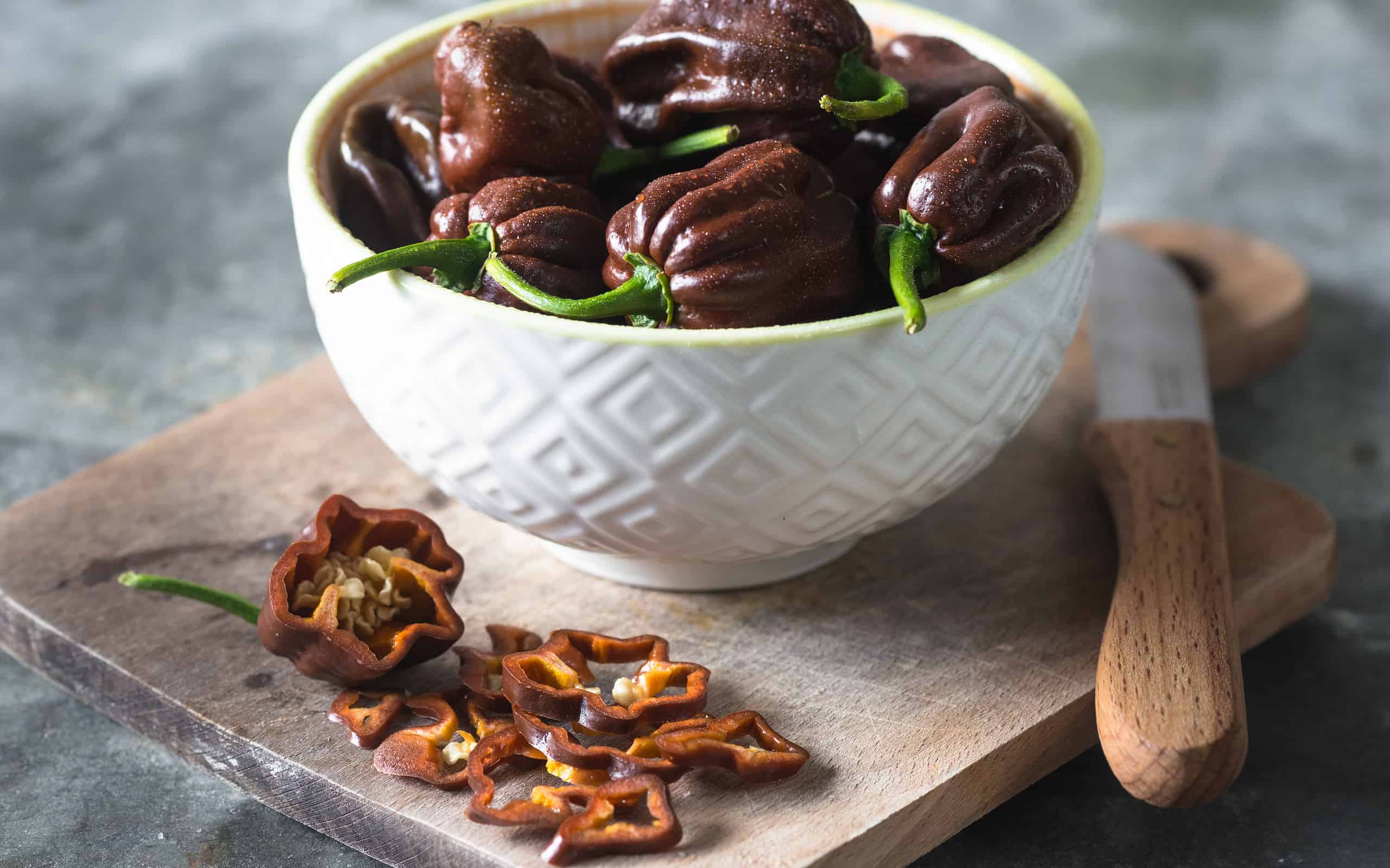Fruits come in all colors of the rainbow, from subtle shades to vibrant hues. But despite fruits’ association with bright reds and yellows, many of nature’s sweet treats are brown. Check out this comprehensive list of brown fruits and learn about their unique tastes and health benefits.
1. Coconut
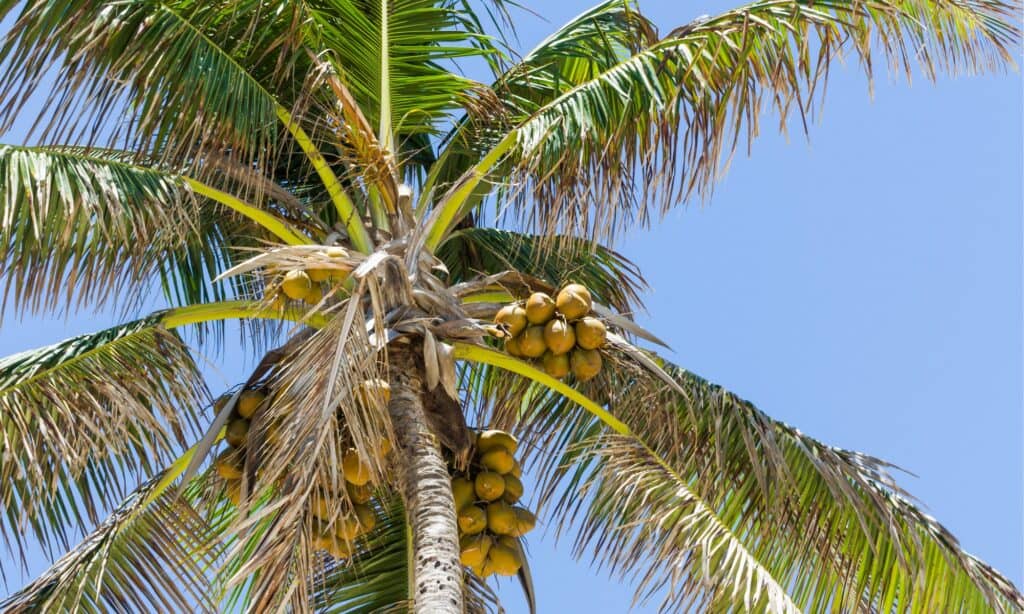
The coconut is one of the most popular brown fruits.
©iStock.com/Thiago Santos
Coconuts belong to the palm tree family, where they thrive in tropical climates. Despite its name, the coconut is not actually a nut. This fruit is a fibrous one-seeded drupe. Coconut is low in carbs, so it is an excellent substitute for carb-heavy foods. Plus, it has tons of minerals and nutrients, like potassium, vitamin B, iron, and manganese. Coconut flesh is dry, chewy, and slightly sweet.
2. Kiwi

Slice your kiwi up for salads, desserts, fruit mixes, or drinks.
©Oksana Mizina/Shutterstock.com
Kiwifruit, also known as Chinese gooseberry, is an oval berry with a brown, fuzzy exterior. This fruit is one of the healthiest on the planet, containing more vitamin C than an orange and more nutrients than an apple. Its bright green flesh can taste like a mix of strawberries, pineapples, and bananas, with the perfect blend of sweetness and acidity.
3. Bosc Pear

Bosc pears are the perfect fall snack.
©VG Foto/Shutterstock.com
Characterized by their brown skin and hard flesh, Bosc pears stand out from the typical green varieties. This bronze-colored fruit is sweet and juicy like a regular pear but also features hints of fall spices, like nutmeg and cinnamon. One pear contains abundant dietary fiber, which can help you feel full for longer. This fruit can also stabilize blood sugar levels, lower cholesterol, and promote healthy digestion.
4. Durian Fruit

Durian has an overwhelming pungent odor.
©taveesak srisomthavil/Shutterstock.com
The durian is a unique edible fruit native to Borneo and Sumatra. However, this fruit can be difficult to find. Several countries have banned durian from public transport due to its pungent odor that’s often described as raw sewage and sweaty socks. Despite its overwhelming scent, durian fruit is sweet and flavorful, with a custard-like texture and vanilla and caramel taste. It’s also very nutritious, containing fiber and many vitamins.
5. Longan
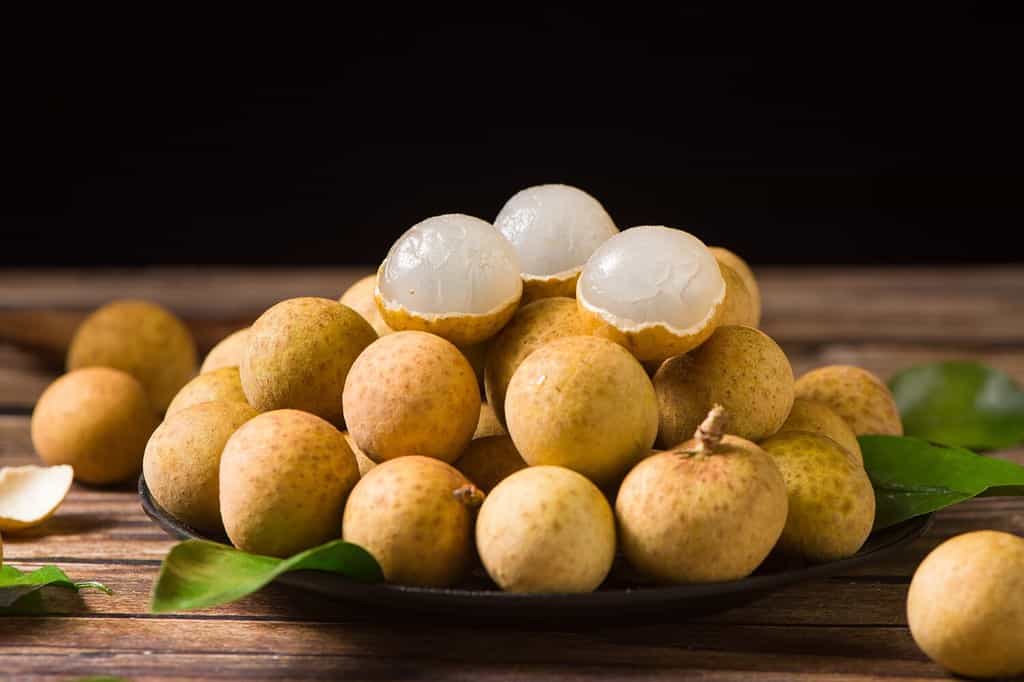
Longan belongs to the soapberry family.
©kungfu01/Shutterstock.com
Also known as dragon’s eye, longan is a tropical fruit with a brown exterior, white flesh, and a black seed. Longan is native to Southeast Asia and belongs to the soapberry family. This fruit has many health benefits, including improved skin health, better sleep, reduced inflammation, and increased libido. The flesh has a high sugar content and tastes very sweet and musky.
6. Longsat

Longsat is native to Southeast Asia.
©Raywatt Jhantarangura/iStock via Getty Images
Native to Southeast Asia, Longsat belongs to the Mahogany family and is a commercial fruit. Longsat is a round and light brown fruit with translucent flesh. It’s tangy, sour, and sweet and tastes similar to grapes. And they are a good source of B-complex vitamins and fiber, aiding in digestion. However, consuming too many can result in bloating, gas, and diarrhea.
7. Dates

Dates are full of fiber and antioxidants.
©iStock.com/Volosina
These super-sweet fruits grow on date palm trees. People consume them either fresh or fully dried. Dates are best known for their fiber, antioxidants, and phytonutrients, which help improve digestion, heart health, and chronic diseases. This fruit is popular in many healthy recipes and has an intense caramel-like taste.
8. Salak

Salak tastes similar to pineapple or jackfruit.
©Dmytro/iStock via Getty Images
Also known as snake fruit, salak is another palm tree species native to Indonesia. This fruit is sweet and tangy, tasting similar to pineapple or jackfruit. However, the seeds are inedible. Salak can be eaten raw or used to make wine. Additionally, it’s beneficial to eye health, digestion, and cardiovascular health.
9. Tamarind
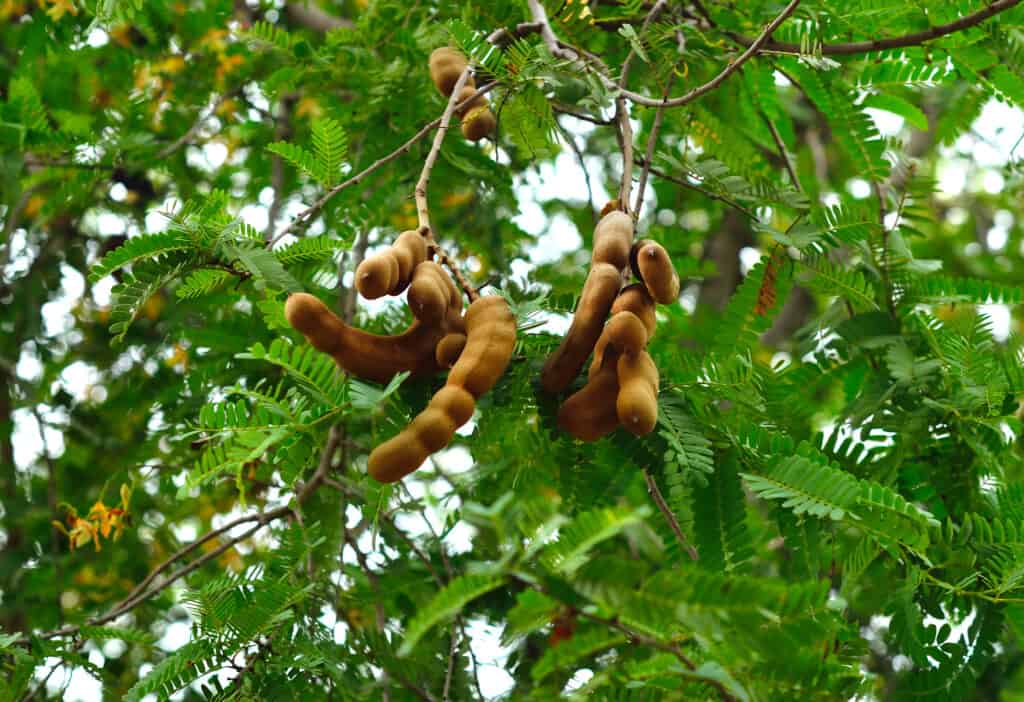
The tamarind tree features fruits used in cooking, as well as metal polish and traditional medicine.
©iStock.com/mypuy
Indigenous to tropical regions in Africa, tamarind is a leguminous tree that bears edible fruit. It produces brown pods filled with sweet and sour pulp that many use to make food, drinks, and medicines. Some say it tastes like a cross between dates, apricots, and lemons. This fruit is rich in polyphenols and flavonoids, which can help decrease cholesterol and blood pressure.
10. Sapodilla
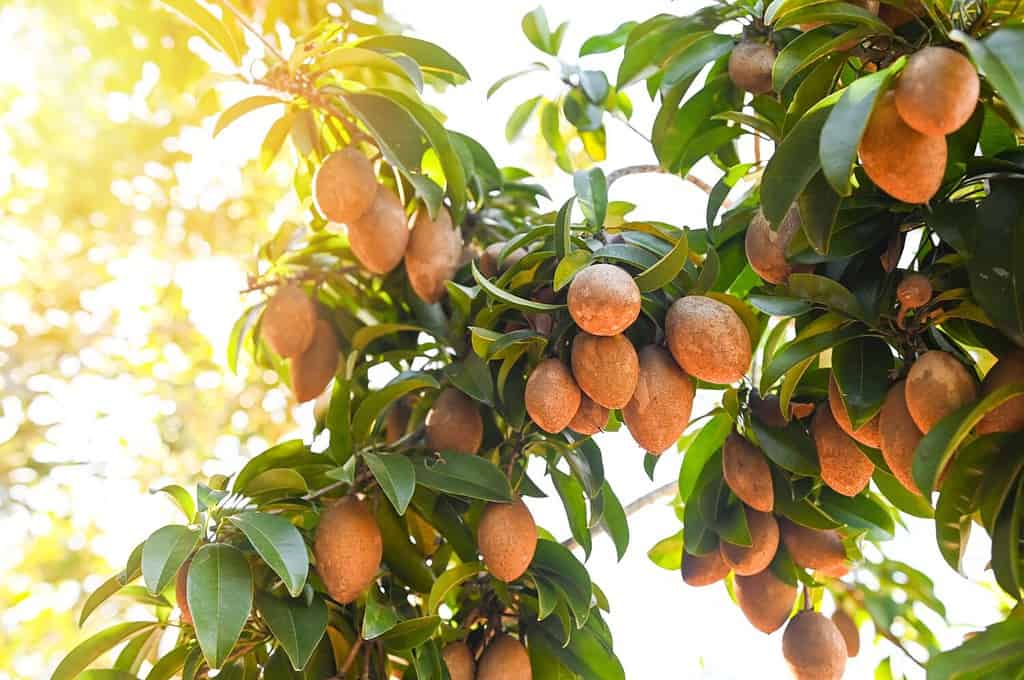
Sapodilla has a flavor reminiscent of pear and sweet potato.
©Bigc Studio/Shutterstock.com
A fruit known by many names, sapodilla is an evergreen tree native to Mexico, Central America, and the Caribbean. This fruit has a unique flavor reminiscent of pear and sweet potato with a hint of brown sugar. Sapodilla is an excellent source of fiber and can improve digestion, heart health, and blood sugar levels.
11. Cupuacu

This odd fruit is typical of the Brazilian Amazon.
©diogoppr/iStock via Getty Images
The cupuacu is a tropical rainforest tree originating from the Amazon and related to the cacao plant. In fact, the taste of cupuacu is similar to chocolate, with a hint of pineapple. This fruit is a good source of antioxidants, which are great for brain health and can protect against pollution and other hazards.
12. Jenipapo
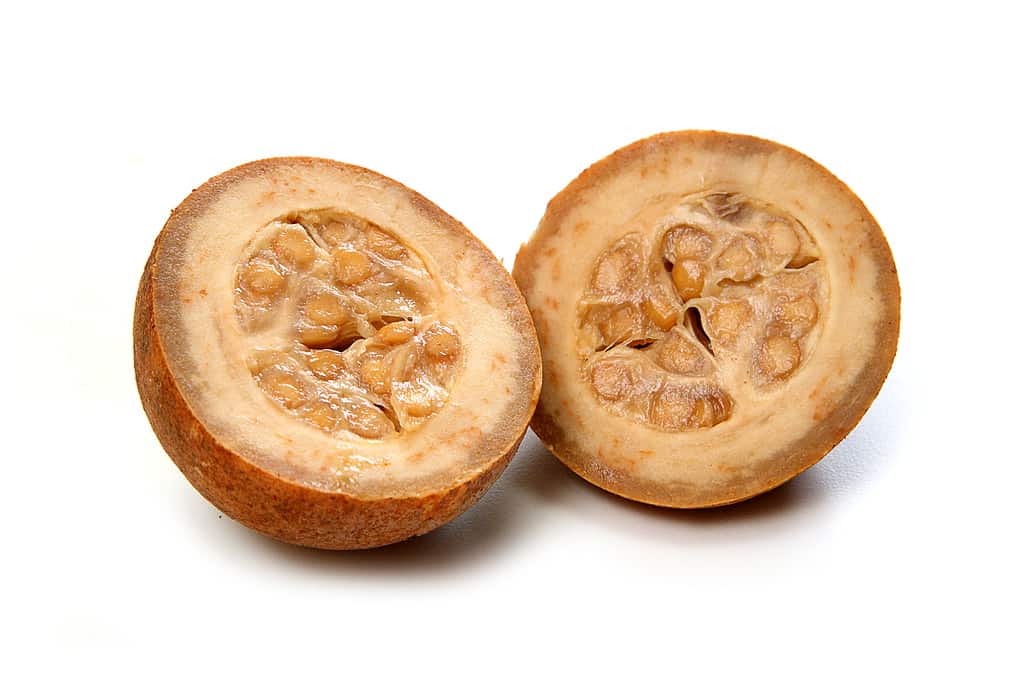
Jenipapo is an ingredient in syrups and liqour.
©Luiz Henrique Mendes/iStock via Getty Images
Native to the Amazon and found throughout large portions of Brazil, the Jenipapo berry ranges in size from a kiwi to a melon. Brazilians use this fruit to make syrups, compotes, and liquor. Ripe Jenipapo can taste very bitter and sour. But it has a delicious flavor when used in recipes with sugar.
13. Baobab
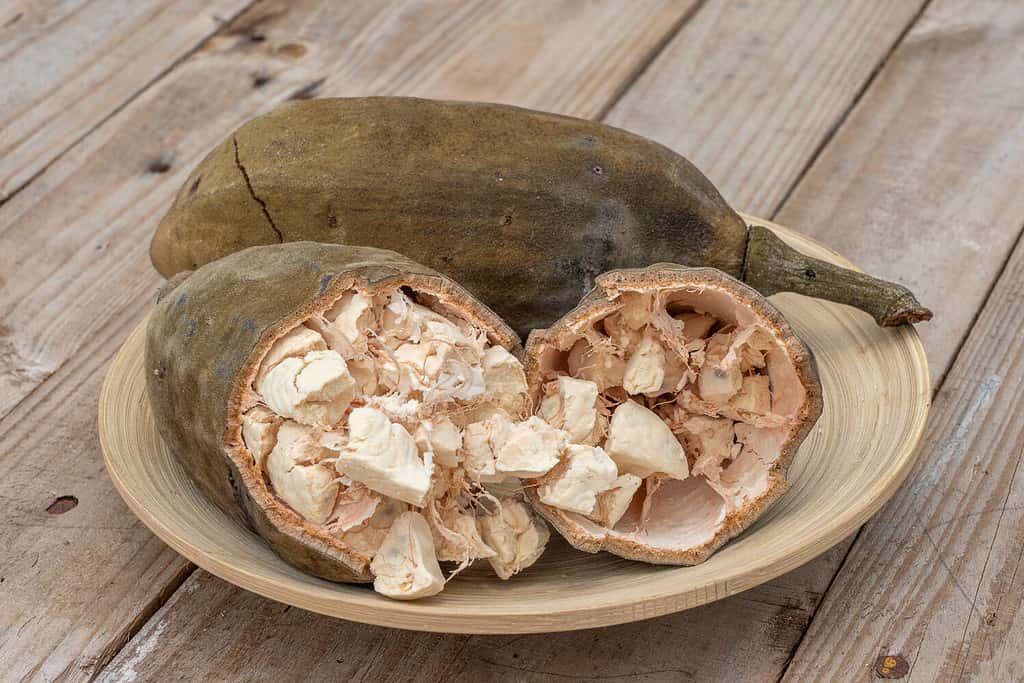
The baobab fruit features a dry, white pulp that is sweet and citrus-like.
©OlegD/Shutterstock.com
Baobab trees grown in Africa produce brown fruits filled with dry, white pulp. Baobab fruit is sweet and citrusy and can be eaten raw or cooked. This fruit has vitamins and minerals that can balance blood sugar, reduce inflammation, promote digestive health, and boost your immune system.
14. Medlar
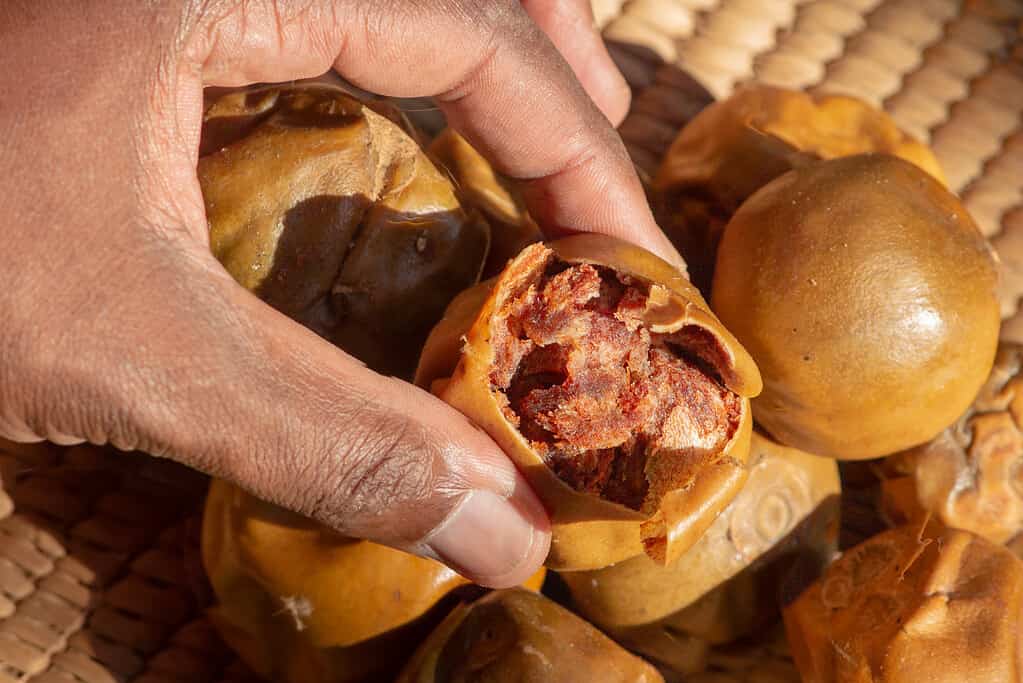
Wild fruits of the African medlar tree are known locally as mpfilwa, umviyo, and umtulwa.
©Ivan Mutacate/iStock via Getty Images
The medlar is a large shrub from the rose family and has been cultivated since Roman times to be eaten raw or used in cooking. This fruit also pairs well with most wines. Medlar is sugary and complex and tastes similar to an over-ripe date. Due to its calcium, potassium, and vitamin C, medlar is great for boosting your immune system.
15. Kumato
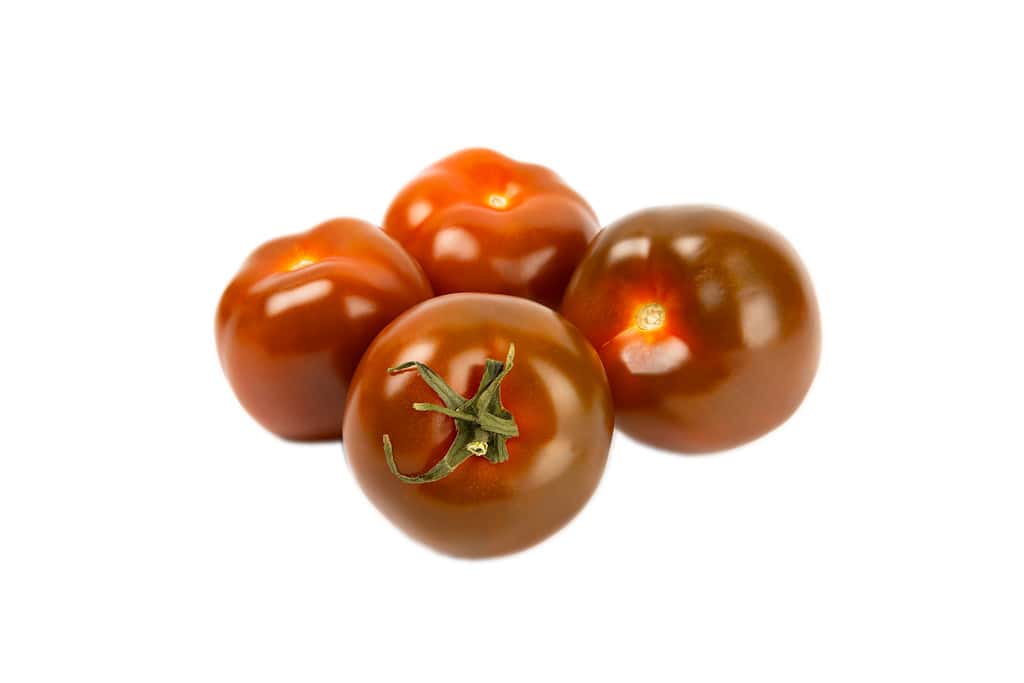
Kumato are sweet and slightly tart.
©Valentyna Yeltsova/iStock via Getty Images
The Spanish developed this cultivar of tomato. It is a standard-size tomato with a deep reddish-brown color. Kumatos are juicy and firm and taste excellent in fresh salads or any other tomato-based recipe. They are sweet and slightly tart and an excellent source of lycopene and beta-carotene, which can help prevent cancer.
16. Nashi Pear
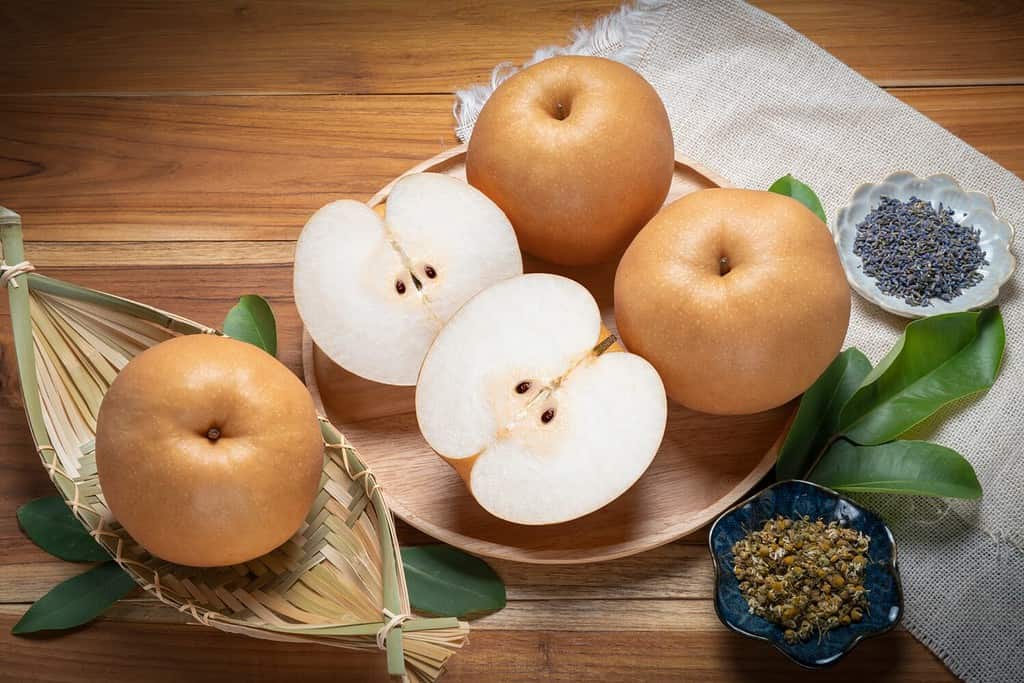
Nashi pear is high in magnesium.
©MERCURY studio/Shutterstock.com
The nashi pear tree is native to East Asia and produces edible light brown fruit. They are true Asian pears and not a hybrid. Nashi pears are crisp, fresh, juicy, and mildly sweet, and they taste delicious eaten as a snack or sliced in a salad. They are also high in magnesium, a mineral that can reduce fatigue.
17. Chocolate Habanero Pepper
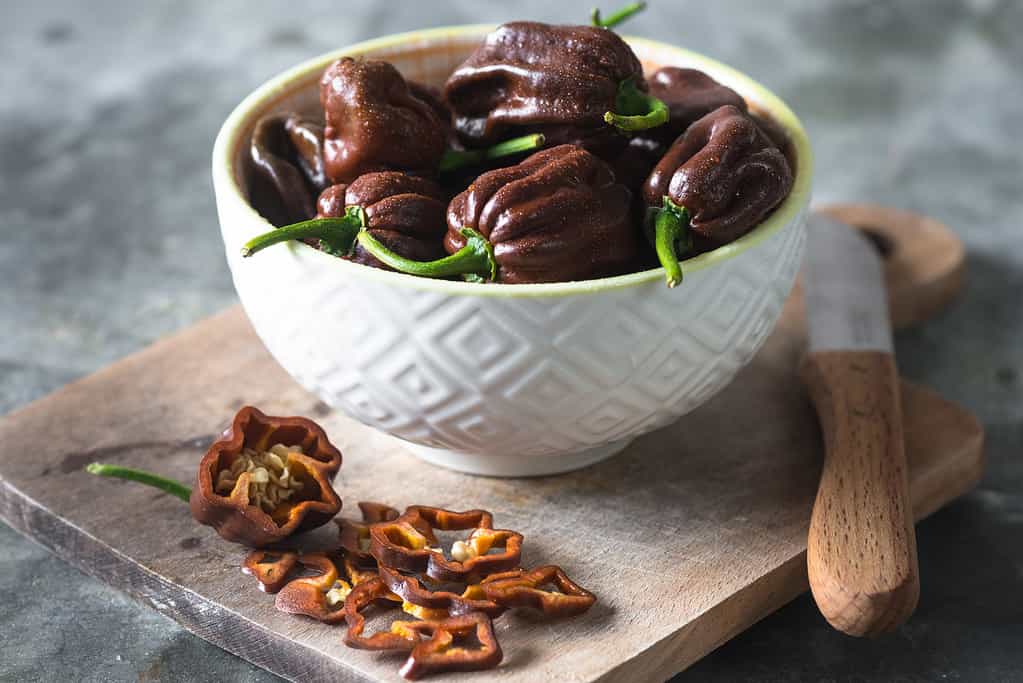
Chocolate habanero peppers are spicier than regular habaneros.
©zeleno/iStock via Getty Images
A cultivar of the habanero pepper, the chocolate habanero was bred to produce a larger and spicier fruit. The chocolate habanero is very hot, double the heat of a regular habanero, with a distinct smoky and earthy taste. Habaneros can lower cholesterol, protect against cardiovascular disease, and reduce the risk of some cancers.
18. Brown Turkey Fig

Brown turkey figs are sweet and mild.
©Surapong Tanachotrungruang/iStock via Getty Images
The brown turkey fig is a woody deciduous shrub from the mulberry family that produces medium-sized brownish-purple fruit. This fruit is sweet and mild and features notes of hazelnut. They are a rich source of magnesium, which can improve muscle function, increase bone health, and control blood pressure.
19. Carob

Carob tastes similar to chocolate.
©CreatiVegan/iStock via Getty Images
The carob plant is an evergreen tree in the legume family used as an ornamental or cultivated plant that produces edible fruit pods. Carob tastes similar to chocolate, except less bitter and more sweet. Like cacao, carob is not eaten raw. Instead, it’s added to desserts, drinks, and other recipes. The carob fruit is a superfood that contains many minerals and vitamins.
20. Coquito Nut
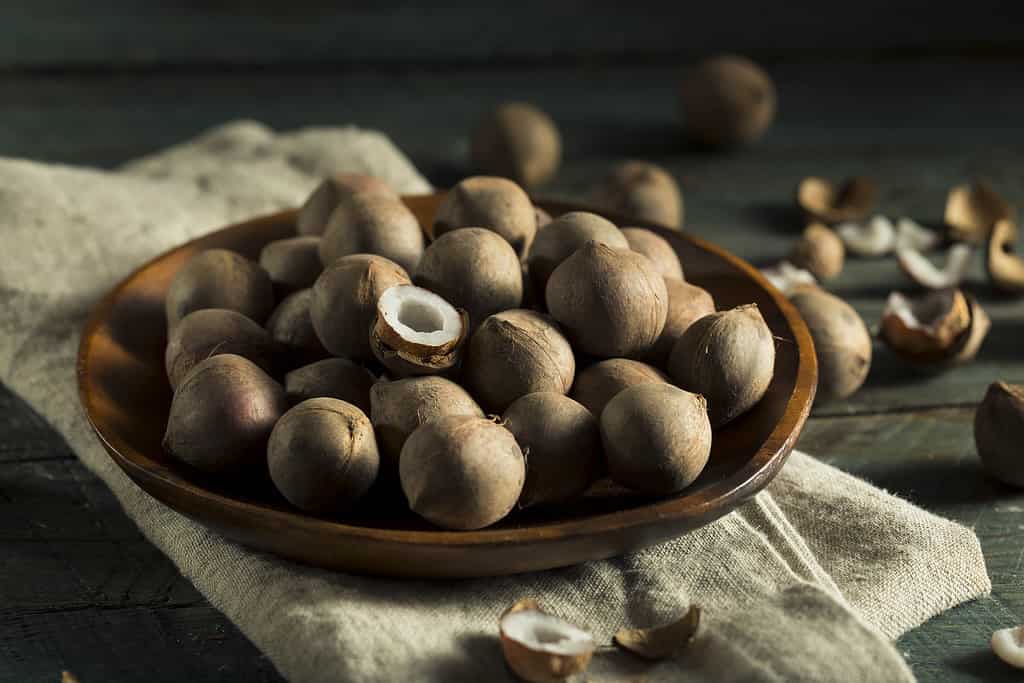
The coquito nut looks like a miniature coconut.
©bhofack2/iStock via Getty Images
Coquito nuts are edible fruits of the Chilean wine palm in South America. The fruits are small, hard, and crunchy and are used as a snack or in sweet dishes. They look like miniature coconuts with a similar flavor, except more almond-like. Coquito nuts are an excellent source of fiber, vitamin K, and vitamin C.
A Recap of 20 Brown Fruits
| #1 | Coconut |
| #2 | Kiwi |
| #3 | Bosc Pear |
| #4 | Durian |
| #5 | Longan |
| #6 | Longsat |
| #7 | Date |
| #8 | Salak |
| #9 | Tamarind |
| #10 | Sapodilla |
| #11 | Cupuacu |
| #12 | Jenipapo |
| #13 | Baobab |
| #14 | Medlar |
| #15 | Kumato |
| #16 | Nashi Pear |
| #17 | Chocolate habanero pepper |
| #18 | Brown Turkey fig |
| #19 | Carob |
| #20 | Coquito nut |
Thank you for reading! Have some feedback for us? Contact the AZ Animals editorial team.

